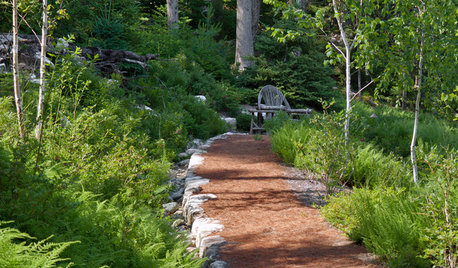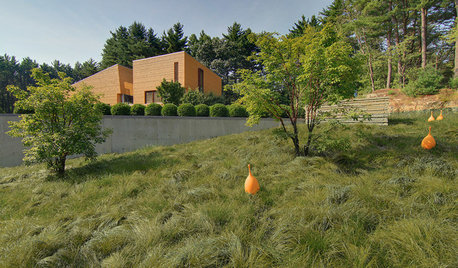try smother & mulch before planting out HOS
oliveoyl3
13 years ago
Related Stories

GARDENING GUIDES5 Weed-Smothering Ground Covers
Let these landscape plants do the dirty work of choking out weeds while you sit back and enjoy the view
Full Story
GARDENING GUIDESNew Ways to Think About All That Mulch in the Garden
Before you go making a mountain out of a mulch hill, learn the facts about what your plants and soil really want
Full Story
GARDENING GUIDES5 Things to Know About Weeding and Mulching Your Native Garden
What’s the best time to pull weeds? How thick should the mulch be? Here’s the scoop for a healthy landscape
Full Story
GARDENING GUIDESThe Art of Green Mulch
You can design a natural garden that doesn’t rely on covering your soil with wood and bark mulch
Full Story
GARDENING GUIDESHow to Pick a Mulch — and Why Your Soil Wants It
There's more to topdressing than shredded wood. Learn about mulch types, costs and design considerations here
Full Story
GARDENING GUIDESLet's Weed Out 4 Native Plant Myths
Plant wisely for a garden that supports pollinators and requires less work
Full Story
LAWN ALTERNATIVESTry Adaptable, Shade-Tolerant Sedges for a Grasslike Look
These native ground covers from around the U.S. thrive in shady areas where lawns suffer — and you don’t have to mow them
Full Story
PLANTING IDEASWant a More Colorful, Natural Garden? Try a Perennial Meadow
Spend less time tending and more time taking in the sights by improving on Victorian and prairie garden designs
Full Story
FRONT YARD IDEASBefore and After: Front Lawn to Prairie Garden
How they did it: Homeowners create a plan, stick to it and keep the neighbors (and wildlife) in mind
Full Story
GARDENING GUIDES15 Ideas to Try in Your Garden This Year
These gardening stories were tops among Houzz readers. Which ideas might you try this year?
Full Story






just1morehosta
trudi_d
Related Professionals
Fort Lee Landscape Architects & Landscape Designers · Milford Landscape Contractors · Allentown Landscape Contractors · Bedford Heights Landscape Contractors · Columbine Landscape Contractors · Fuquay-Varina Landscape Contractors · Hilton Head Island Landscape Contractors · La Vista Landscape Contractors · Lemay Landscape Contractors · Mastic Beach Landscape Contractors · Natick Landscape Contractors · South Portland Landscape Contractors · Thornton Landscape Contractors · Vancouver Landscape Contractors · Clearfield Landscape Contractorsoliveoyl3Original Author
vvesper
gardenweed_z6a
terrene
just1morehosta
Michelle Worthgold
oliveoyl3Original Author